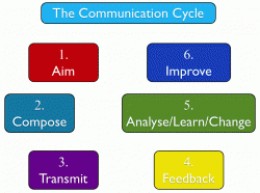
They constitute the origin of further developments in the form of constitutive models. Beginning in the 1970s, transactional models of communication, like Barnlund's model, were proposed to overcome the limitations of interaction models. For many purposes, they were later replaced by interaction models, like Schramm's model. All early models were linear transmission models, like Lasswell's model, the Shannon–Weaver model, Gerbner's model, and Berlo's model. The problem of communication was already discussed in Ancient Greece but the field of communication studies only developed into a separate research discipline in the middle of the 20th century. Further types include encoding-decoding models, hypodermic models, and relational models. Models of non-human communication describe communication among other species. They contrast with intrapersonal models, which discuss communication with oneself. Interpersonal models describe communicative exchanges with other people. Constitutive and constructionist models stress that communication is a basic phenomenon responsible for how people understand and experience reality. They hold that meaning is created in this process and does not exist prior to it. Transaction models see sending and responding as simultaneous activities. Interaction models include a feedback loop through which the receiver responds after getting the message.

Linear transmission models understand communication as a one-way process in which a sender transmits an idea to a receiver. General models apply to all forms of communication while specialized models restrict themselves to specific forms, like mass communication. Models of communication are classified depending on their intended applications and on how they conceptualize the process. In both cases, noise may interfere and distort the message. The receiver needs to decode the message to understand the initial idea and provides some form of feedback. They include the idea that a sender encodes information in the form of a message and sends it to a receiver through a channel. Some basic components and interactions reappear in many of the models. The components and their interactions are usually presented in the form of a diagram. Despite their usefulness, many models are criticized based on the claim that they are too simple because they leave out essential aspects. This helps researchers formulate hypotheses, apply communication-related concepts to real-world cases, and test predictions. Their function is to give a compact overview of the complex process of communication. Most models try to describe both verbal and non-verbal communication and often understand it as an exchange of messages. Models of communication are simplified representations of the process of communication. The receiver then decodes the message and gives some form of feedback.


Noise may distort the message along the way. Many models of communication include the idea that a sender encodes a message and uses a channel to transmit it to a receiver.


 0 kommentar(er)
0 kommentar(er)
